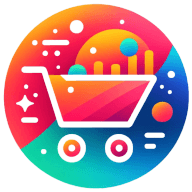In the ever-evolving world of business, understanding your consumer is paramount. This blog post will delve into the various methods for tracking consumer behavior data. It will provide insights into the techniques that businesses can employ to gather, analyze, and interpret data about their consumers. This information is crucial in shaping marketing strategies, improving customer experience, and ultimately driving business growth.
The Importance of Tracking Consumer Behavior Data
Tracking consumer behavior data is a vital aspect of business operations. It provides businesses with valuable insights into their customers' preferences, buying habits, and overall behavior. These insights can help businesses tailor their products and services to meet their customers' needs better.
Consumer behavior data can reveal patterns and trends that can guide a business's marketing strategies. For instance, if a business notices that a particular product is popular among a specific demographic, they can target their marketing efforts towards that demographic. This targeted approach can result in higher sales and improved customer satisfaction.
Moreover, tracking consumer behavior data can help businesses identify potential problems before they become significant issues. For example, if a business notices a sudden drop in sales for a particular product, they can investigate the cause and take corrective action. This proactive approach can save a business from substantial losses.
Traditional Methods for Tracking Consumer Behavior Data
Businesses have been tracking consumer behavior data for many years, long before the advent of digital technology. Traditional methods for tracking consumer behavior data include surveys, focus groups, and observational studies.
Surveys are a common method for gathering consumer behavior data. Businesses can ask their customers specific questions about their preferences, buying habits, and satisfaction levels. The responses can provide valuable insights into consumer behavior.
Focus groups are another traditional method for tracking consumer behavior data. In a focus group, a small group of consumers discusses their opinions, preferences, and experiences with a product or service. The discussion is usually guided by a moderator, who ensures that all participants contribute to the discussion.
Observational studies involve observing consumers in a natural or controlled setting. For example, a business might observe how consumers interact with a product in a store. This method can provide rich, detailed data about consumer behavior.
Digital Methods for Tracking Consumer Behavior Data
With the advent of digital technology, businesses now have access to a wealth of consumer behavior data. Digital methods for tracking consumer behavior data include web analytics, social media monitoring, and mobile analytics.
Web analytics involves tracking and analyzing how consumers interact with a business's website. Businesses can track metrics such as page views, bounce rate, and conversion rate. These metrics can provide insights into consumer behavior and website performance.
Social media monitoring involves tracking and analyzing consumer behavior on social media platforms. Businesses can monitor mentions of their brand, track hashtags related to their products or services, and analyze consumer sentiment. This information can guide a business's social media strategy and improve customer engagement.
Mobile analytics involves tracking and analyzing consumer behavior on mobile devices. Businesses can track metrics such as app downloads, in-app purchases, and user engagement. These metrics can provide insights into consumer behavior and mobile app performance.
Data Analysis and Interpretation
Gathering consumer behavior data is only the first step. Businesses must also analyze and interpret the data to gain meaningful insights.
Data analysis involves processing and organizing the data to identify patterns and trends. Businesses can use statistical techniques, data visualization tools, and machine learning algorithms to analyze the data.
Interpretation involves making sense of the data. Businesses must interpret the data in the context of their industry, market conditions, and business objectives. This interpretation can guide a business's decision-making process and strategy development.
Ethical Considerations in Tracking Consumer Behavior Data
While tracking consumer behavior data can provide valuable insights, businesses must also consider the ethical implications. Consumers have a right to privacy, and businesses must respect this right.
Businesses should be transparent about their data collection practices. They should inform consumers about the types of data they collect, how they use the data, and who they share the data with. Businesses should also provide consumers with options to opt-out of data collection.
Furthermore, businesses should ensure that they collect and use consumer behavior data in a way that is fair and non-discriminatory. They should not use the data to exploit or harm consumers.
The Future of Tracking Consumer Behavior Data
The future of tracking consumer behavior data is promising. With advancements in technology, businesses will have access to even more data and sophisticated tools for analysis.
Artificial intelligence (AI) and machine learning (ML) will play a significant role in tracking consumer behavior data. These technologies can process large amounts of data quickly and accurately, providing businesses with real-time insights.
Moreover, the Internet of Things (IoT) will provide businesses with new sources of consumer behavior data. For example, smart home devices can provide data about consumers' daily routines and preferences.
Despite these advancements, businesses must continue to prioritize ethical data collection and use. They must balance the benefits of tracking consumer behavior data with the need to respect consumers' privacy and rights.
Wrapping Up: Techniques for Monitoring Consumer Behavior Data
Tracking consumer behavior data is a powerful tool for businesses. It can provide valuable insights into consumer preferences, buying habits, and overall behavior. Traditional methods such as surveys, focus groups, and observational studies remain relevant. However, digital methods such as web analytics, social media monitoring, and mobile analytics offer new opportunities for data collection. Regardless of the methods used, businesses must analyze and interpret the data effectively and ethically. The future of tracking consumer behavior data is promising, with advancements in AI, ML, and IoT providing new possibilities.

